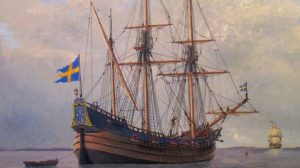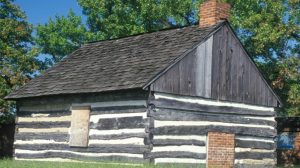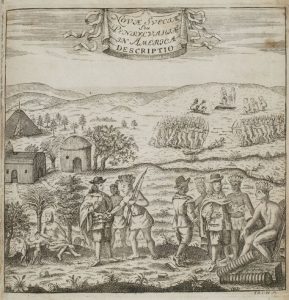Long before God put a dream in my heart to be a writer, I loved the written word. The ability to skillfully craft your thoughts and manipulate the words to convey the exact meaning you desire is a benefit that oral communication often lacks. As a lover of history, diaries and letters from generations gone by provide glimpses into a culture and way of life that is often hard for us to understand in the 21st century. The vocabulary can tell us if the writer was educated and the tone can give insight into the character of the person who penned it.
One such letter recently caught my attention. In “A Letter from a Freedman to His Old Master,” Jourdan Anderson responds to his former master’s request that he return to the family’s plantation and help restore the farm to it’s pre-Civil War . In his letter, Jourdan’s satirical wit shines and is often compared to the dry humor of American novelist, Mart Twain.

Jourdan Anderson
Who was Jordan Anderson?
Not much is known about the former slave other than he was born “somewhere” in Tennessee in 1825. He was later sold as a young boy of 7 or 8 years to General Paulding Anderson of Big Spring, Tennessee. The General gifted Jourdan to his son Patrick who often went by his middle name, Henry. Jourdan went on to become one of the most skilled workers on the Anderson’s plantation. In 1848, her married Amanda McGregor on the Anderson’s plantation and together they had 11 children.
Similar to most slaves, the outbreak of the civil war changed Jourdan’s life very life little. However in 1864, a group of Union soldiers stumbled upon Jourdan toiling on the property and granted him, his wife and children their freedom, making the act official with papers from the Provost Marshal General of Nashville. Documents Jordan would treasure for the rest of his life.
With his new emancipation papers in hand, Jourdan and his family promptly left the plantation. An act that angered Henry so greatly he shot at his former slave repeatedly as he fled with his family, only ceasing to fire when a neighbor grabbed Henry’s pistol.
Jourdan and his family eventually made their way to Dayton, Ohio where a local abolitionist, Valentine Winters, helped him and his wife secure employment. While there, the couple’s children were enrolled in school, something the illiterate Jourdan was never allowed to do.
Now this is where the story gets really interesting.
It was here in 1865, that Jourdan received a letter from his former master, Henry Anderson. Unable to read, Jourdan took the letter to Winters and asked him to read it aloud. As it turns out, the letter audaciously invited Jourdan and his family to to return to the Big Spring plantation which had fallen into disrepair. Deeply in debt and desperate to save himself from financial ruin, Henry implored his former slave, a man he knew had the skills to save the plantation, to not only return himself but to convince other freed slaves to come with him. In the letter, Anderson promises to pay any laborers for their work and to treat them as any other freed man.

Jourdan’s original letter reprinted in the Salt Lake Tribune, August 1865.
Some people would have had a good laugh then ball up the letter and throw it away, taking delight in his former master’s change of circumstances. But Jourdan had another idea. After several days of pondering Henry’s offer, Jourdan invited Winters to his home and requested that he write a letter in response that Jourdan would dictate. At Jourdan’s request, Winters sent the following letter to the man who had enslaved his family that Jourdan himself titled, “A Letter from a Freedman to His Old Master.”
“A Letter from a Freedman to His Old Master”
Dayton, Ohio,
August 7, 1865
To My Old Master, Colonel P.H. Anderson, Big Spring, Tennessee
Sir: I got your letter, and was glad to find that you had not forgotten Jourdon, and that you wanted me to come back and live with you again, promising to do better for me than anybody else can. I have often felt uneasy about you. I thought the Yankees would have hung you long before this, for harboring Rebs they found at your house. I suppose they never heard about your going to Colonel Martin’s to kill the Union soldier that was left by his company in their stable. Although you shot at me twice before I left you, I did not want to hear of your being hurt, and am glad you are still living. It would do me good to go back to the dear old home again, and see Miss Mary and Miss Martha and Allen, Esther, Green, and Lee. Give my love to them all, and tell them I hope we will meet in the better world, if not in this. I would have gone back to see you all when I was working in the Nashville Hospital, but one of the neighbors told me that Henry intended to shoot me if he ever got a chance.
I want to know particularly what the good chance is you propose to give me. I am doing tolerably well here. I get twenty-five dollars a month, with victuals and clothing; have a comfortable home for Mandy,—the folks call her Mrs. Anderson,—and the children—Milly, Jane, and Grundy—go to school and are learning well. The teacher says Grundy has a head for a preacher. They go to Sunday school, and Mandy and me attend church regularly. We are kindly treated. Sometimes we overhear others saying, “Them colored people were slaves” down in Tennessee. The children feel hurt when they hear such remarks; but I tell them it was no disgrace in Tennessee to belong to Colonel Anderson. Many darkeys would have been proud, as I used to be, to call you master. Now if you will write and say what wages you will give me, I will be better able to decide whether it would be to my advantage to move back again.
As to my freedom, which you say I can have, there is nothing to be gained on that score, as I got my free papers in 1864 from the Provost-Marshal-General of the Department of Nashville. Mandy says she would be afraid to go back without some proof that you were disposed to treat us justly and kindly; and we have concluded to test your sincerity by asking you to send us our wages for the time we served you. This will make us forget and forgive old scores, and rely on your justice and friendship in the future. I served you faithfully for thirty-two years, and Mandy twenty years. At twenty-five dollars a month for me, and two dollars a week for Mandy, our earnings would amount to eleven thousand six hundred and eighty dollars. Add to this the interest for the time our wages have been kept back, and deduct what you paid for our clothing, and three doctor’s visits to me, and pulling a tooth for Mandy, and the balance will show what we are in justice entitled to. Please send the money by Adams’s Express, in care of V. Winters, Esq., Dayton, Ohio. If you fail to pay us for faithful labors in the past, we can have little faith in your promises in the future. We trust the good Maker has opened your eyes to the wrongs which you and your fathers have done to me and my fathers, in making us toil for you for generations without recompense. Here I draw my wages every Saturday night; but in Tennessee there was never any pay-day for the negroes any more than for the horses and cows. Surely there will be a day of reckoning for those who defraud the laborer of his hire.
In answering this letter, please state if there would be any safety for my Milly and Jane, who are now grown up, and both good-looking girls. You know how it was with poor Matilda and Catherine. I would rather stay here and starve—and die, if it come to that—than have my girls brought to shame by the violence and wickedness of their young masters. You will also please state if there has been any schools opened for the colored children in your neighborhood. The great desire of my life now is to give my children an education, and have them form virtuous habits.
Say howdy to George Carter, and thank him for taking the pistol from you when you were shooting at me.
From your old servant,
Jourdon Anderson.
From Former Slave to Media Sensation
As fate would have it, if Jourdan had crumpled up that tempting offer of employment from his former owner and gone on with his peaceful life in Ohio, we wouldn’t be talking about him today. You see, Jourdan’s friend, Valentine Winters later had the letter published in the Cincinnati Commercial under the same title. The satirical eloquence with which Jourdan politely told his boss where he could shove his offer of employment made the letter immensely popular. Eventually the letter was reprinted in papers across the country and even in Europe, making Jourdan a media sensation by today’s standards and his former master a laughing stock.
To no one’s surprise, Henry never took Jordan up on his offer to pay him 50 years of past wages up front and Jourdan’s highly publicized response likely prevented any of the family’s other slaves from being tempted back to the family’s Tennessee plantation. As a result, the crops that year were never harvested. Henry, deeply in debt, had to sell the plantation for a fraction of its worth and he died penniless and destitute a few years later at age 44.
As for Jordan, he lived and worked in Dayton for the rest of his life, dying in 1907 at the age of 81. His beloved wife, Mandy, died six years later and is buried alongside him.
What is your reaction to Jourdan’s letter? If you had been in his shoes, would you have feared any retribution?












































